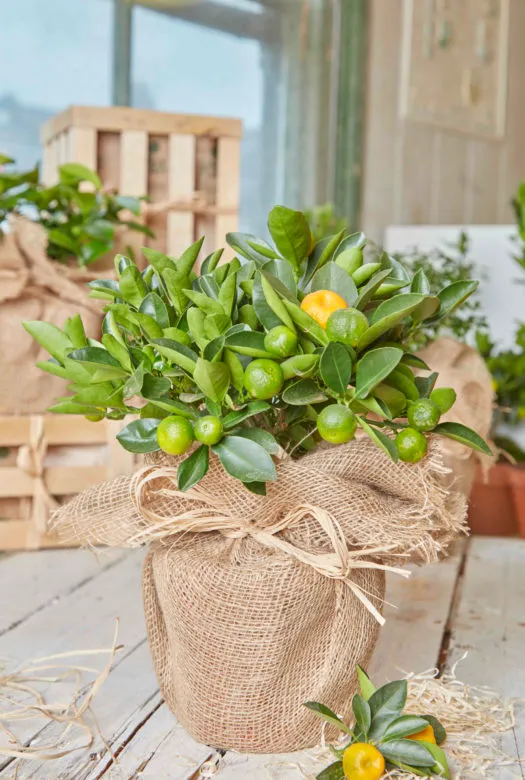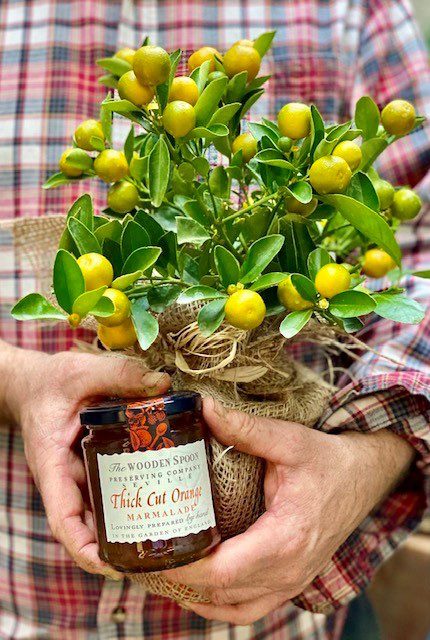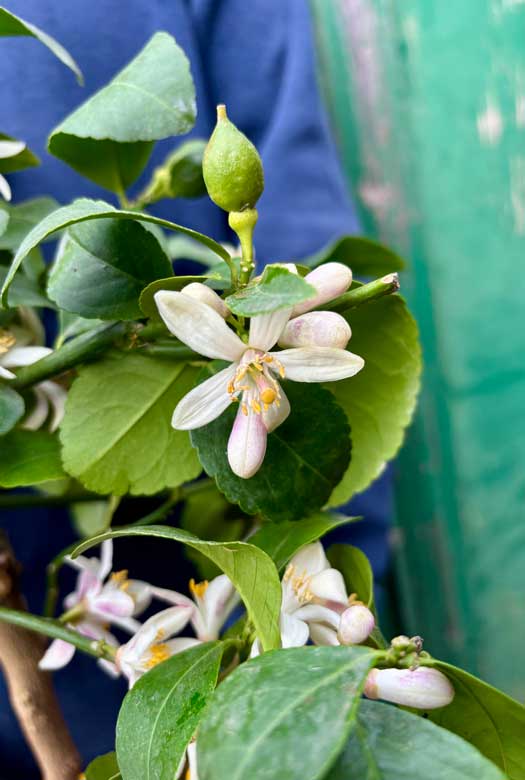Calamondin Orange Tree
A Comprehensive Gluttonous Gardener Plant Care Guide
The Calamondin orange was one of our very first products and is still one of our all time favourites. Also known as the Philippine lime or the Acid orange, the Calamondin is a hybrid produced by crossing sweet tangerines and kumquats. The resulting fruit has a sweet, tart flavour that makes excellent cakes, preserves and liqueurs.
Citrus trees are especially prized during Chinese New Year when they are often given as gifts and are thought to bring good luck and fortune to the recipient. The more fruit a tree has, the more luck it is thought to bring, so the prolific Calamondin variety is especially popular.
Whilst most citrus trees have a short fruiting season, this pint-sized beauty grows happily indoors, even in our intemperate climes. It produces delicate white blossoms with a soft orange fragrance and firm-skinned little fruits all year round.
What to expect?

Evergreen

Fruit

Greenhouse

Fragrant
Care Instructions

Planting
During the chillier winter months, Calamondin orange trees will be very happy indoors on a bright windowsill. Turn the pot regularly so that all the leaves have their day in the sun, but avoid placing your tree too close to a radiator as they are not big fans of central heating!
During the hot summer months, move the tree outdoors into a sunny spot in the garden or on a balcony or patio.
When your Calamondin tree begins to look pressed for space, it is time to transfer it to a larger pot. This is best done at the beginning of spring.
Choose a pot one size bigger and cover the base with a layer of gravel or stones to allow for drainage. Fill the pot with soil and compost. Remove any dead or damaged roots from the base of the plant and place it in the pot.
Refill the pot around the base of the plant with soil and citrus-specific compost up to the top. Press the soil down lightly around the plant and water well.

Watering and feeding
Water your Calamondin well in the first few months, and frequently during the summer if the weather is particularly hot or dry. In the winter, water the tree when the top of the soil feels dry.
Treat your Calamondin tree to a regular feed of citrus-specific or liquid in the summer and when re-potting.

Care and pruning
Calamondin orange trees are quite self –sufficient so they require very little pruning. Pruning is best done before re-potting, when you should trim off any crossing, damaged, diseased or dead branches.

Harvest
Calamondin fruits are fantastically useful for both the cook and the cocktail fan. The juice of the green unripe fruits can be used in marinades, dressings and condiments, and brings a sour, tart flavour to tea, soft drinks and cocktails.
Unlike most fruit, once ripe, Calamondin oranges can be left on the tree for several weeks until you are ready to use them. Why not make our small but perfectly formed baby-calamondin-orange-and-almond-heart-cakes or turn them into our head gardener Ned’s deliciously potent Vin d’orange. The head gardener’s Vin d’orange Recipe





